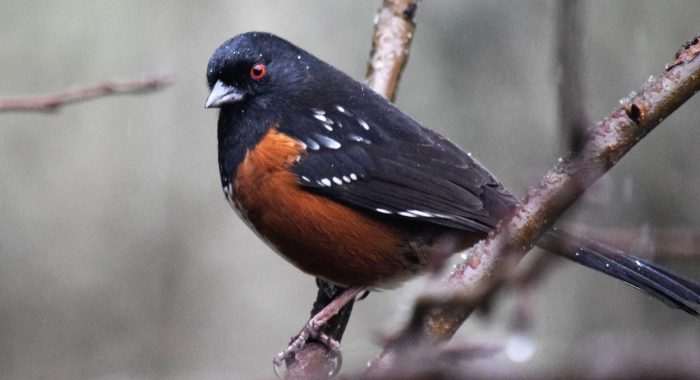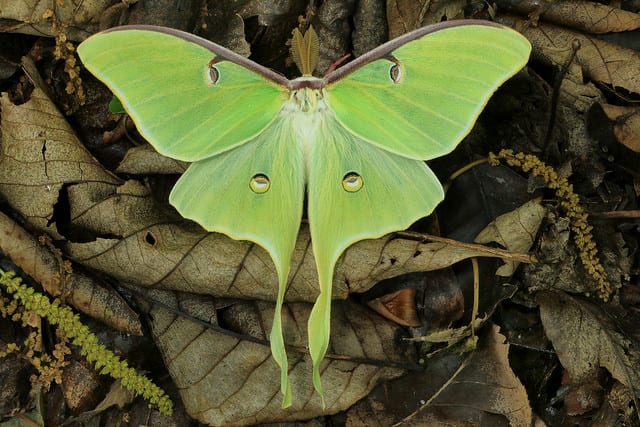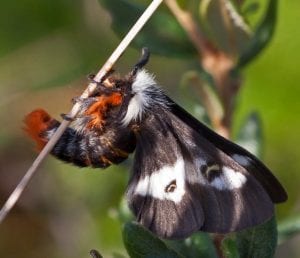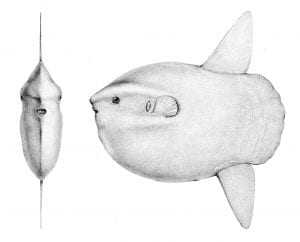By John L. Turner
Human beings (Homo sapiens). Domestic dog and cat (Canus lupus familiaris and Felis catus, respectively). White Oak tree (Quercus alba). Blue Whale (Balaenoptera musculus).
You may remember these “Latin/Greek “ or “Scientific” names from your high school biology days and probably have given them little to no thought ever since. Further, I bet you currently ignore them whenever you see them in a book, magazine or on-line article, quickly passing over these obscure, hard to pronounce, often multisyllabic words, tucked neatly inside a pair of parentheses.
First a little bit about the rules and convention concerning scientific names. All species on planet Earth have been assigned a binomial name, the first referring to the genus and the second the species; so with humans the scientific name “Homo sapiens” means that human beings belong to the genus Homo (the only existing species in the genus) and are unique belonging to the species “sapiens”. The generic name is capitalized but not the species name. Both are either italicized or are unitalicized but underlined. So in the case of the Blue Jay either Cyanocitta cristata or Cyanocitta cristata conforms. (By the way, the name means a chattering blue bird with a crest.)
You might well ask what’s the purpose of scientific names? Plain and simple, it is to eliminate ambiguity and prevent mistakes. It’s a way to ensure that a scientist on Long Island and a scientist elsewhere in the world are communicating about the same species…an uncertain outcome if these scientists are communicating using the common names of species.
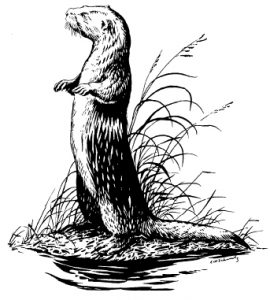 For example, two scientists discussing otter biology need to know what otter species they’re talking about. Is it the Sea Otter (Enhydra lutris)? Or maybe the River Otter (Lontra canadensis) or Asian Small-clawed Otter (Aonyx cinereus)? How about Giant River Otter, (Pteronura brasiliensis), European Otter (Lutra lutra) or any other of the thirteen species of otters found in the world. In discussing some aspect of otter ecology or biology, just mentioning “otter” may not be sufficient to provide the level of specificity or accuracy needed. Researchers need to know they’re both talking about the same species of otter. Or bacteria. Or slime mold. Or many other species that can affect us.
For example, two scientists discussing otter biology need to know what otter species they’re talking about. Is it the Sea Otter (Enhydra lutris)? Or maybe the River Otter (Lontra canadensis) or Asian Small-clawed Otter (Aonyx cinereus)? How about Giant River Otter, (Pteronura brasiliensis), European Otter (Lutra lutra) or any other of the thirteen species of otters found in the world. In discussing some aspect of otter ecology or biology, just mentioning “otter” may not be sufficient to provide the level of specificity or accuracy needed. Researchers need to know they’re both talking about the same species of otter. Or bacteria. Or slime mold. Or many other species that can affect us.
If you have an interest in nature and natural history, I’d encourage you take a second look at scientific names as they often impart some helpful information about or describe some aspect of a species, referring to the geographic range of the species or where it was first discovered. It may also provide information regarding some physical characteristic of the species, say possessing a long tail or having a red cap on its head.
For example, the Latin/Greek name for the Ring-billed Gull, a common gull on Long Island, is Larus delawarensis, the species name meaning “of Delaware,” stemming from the fact the first specimen of this species was collected near the Delaware River south of Philadelphia. And as but one of many examples relating to a physical feature, the scientific name for the Eastern Towhee is Pipilo erythrophthalmus; the species name is Greek for red-eyed — “erythros” meaning red and “ophthalmos” meaning eye (think ophthalmologist). Indeed one of the conspicuous features of this beautiful member of the sparrow family, a common breeding bird in the Long Island Pine Barrens, is its red eye.
The scientific name for the Bald Eagle (Haliaeetus leucocephalus) presents another example in which a scientific name expresses a physical feature — leucocephalus means white-headed and Haliaeetus means salty sea eagle, a description of the type of habitat it frequents, so the name provides an apt description of the species — the salty sea eagle with the white head.
Other scientific names honor their discoverer or someone who the discoverer of the species wants to honor. Former Presidents Reagan, Carter, Clinton, George W. Bush, Obama, and Trump have all been so honored with a species named after them as has all the members of the Rock Band Queen (Lead singer Freddie Mercury is honored with the name Heteragrion freddiemercuryi, a species of damselfly). So too the members of the Rolling Stones, Rush, and the Ramones. Lady Gaga and Beyonce have been so honored, so has Bob Dylan, and comedian and late night host Stephen Colbert has done very well — with three species named after him: a beetle, spider, and wasp.
In addition to honoring an individual or providing some basic information about the species, some Latin names provide a more complete picture of the species.
Let’s take Trailing Arbutus as an example. A beautiful low-growing plant with five-petaled, light pink flowers which grows along sandy trails in the Pine Barrens, the Latin name for the species is Epigaea repens. “Gaea” is Greek for the Earth or Earth Goddess and “Epi” mean “upon.” So the generic name means “upon the earth”. The species name “repens” comes from repent. What position are you typically in when repenting? Trailing or prostrate on the ground. So, the scientific name for Trailing arbutus means to “trail upon the earth” an accurate description of the plant’s growth form.
Another example involves the Northern Mockingbird, a common breeding bird in suburbia. Well-known for its ability to mimic the songs and sounds of other birds, the Mockingbird’s scientific name, Mimus polyglottis, means “many throated or many tongued mimic”; poly meaning many and glottis referencing the throat or tongue.
While the Latin names for the arbutus and Mockingbird are accurate, for some other scientific names of species the jury is still out with regard to accuracy of the name. Take us humans (Homo sapiens) which means “wise man.” Given the path we’re on, of global destabilization of this planet’s finely tuned climate, with potential catastrophic effects for human societies and the natural world, perhaps a change to our scientific name is in order. Indeed, time will soon tell whether “sapiens” should be kept or replaced.
A resident of Setauket, John Turner is conservation chair of the Four Harbors Audubon Society, author of “Exploring the Other Island: A Seasonal Nature Guide to Long Island” and president of Alula Birding & Natural History Tours.

